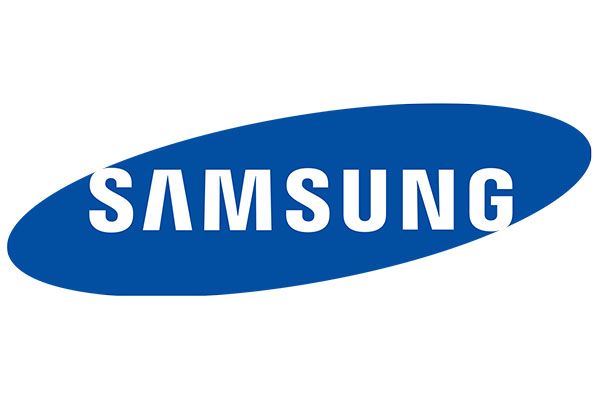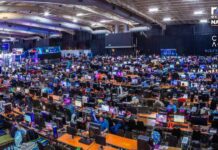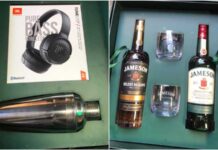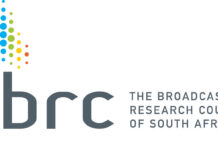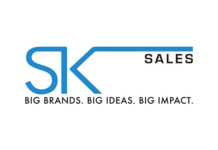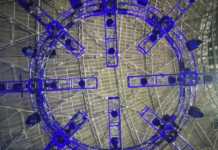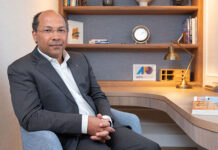Registers net profit of KRW11,19 trillion (R1,2 trillion) on sales of KRW62,05 trillion (R6,7 trillion)
3Q consolidated operating profit reaches KRW14, 53 trillion (R1,57 trillion)
Samsung Electronics announced financial results for the third quarter ended September 30, 2017. Samsung’s revenue for the quarter was KRW62,05 trillion (R6,7 trillion), an increase of KRW14.23 trillion (R1,5 trillion) year-on-year, while operating profit for the quarter posted a record KRW14,53 trillion (R1,5 trillion), an increase of KRW9,33 trillion (R1 trillion) year-on-year.
In the third quarter, strong demand for high-performance memory chipsets for servers and flagship mobile devices was a contributing factor to the company’s overall robust performance. The Semiconductor Business registered significant earnings growth both year-on-year and quarter-on-quarter and the System LSI added to the earnings rally through increased sales of DDIs and image sensors. The display panel segment posted an earnings decline, despite the expanded sales of flexible OLED panels for premium smartphones. The Mobile Business saw strong shipments thanks to the launch of Galaxy Note 8 and solid sales of the new Galaxy J series, but its earnings declined quarter-on-quarter due to the higher sales proportion of mass-market smartphones.
The Memory Business achieved strong earnings results for the quarter on the back of high seasonal demand for all memory applications, the trend is towards higher density chips and a continuation of favourable supply and demand conditions and prices. For NAND, the launch of flagship smartphones and the expansion of cloud infrastructure drove strong demand. For DRAM, demand for applications used in servers, mobile devices, PCs and game consoles also remained solid.
For the OLED business, an increase in shipments of flexible displays for customers’ new flagship smartphone launches drove an increase in sales. However, quarter-on-quarter earnings declined due to an increase in start-up costs of the new OLED production line and increased competition within rigid OLED products. For the LCD business, third quarter earnings declined, as an imbalance in supply and demand led to a decrease in the ASP of LCD panels. Further, capacity expansion in the LCD industry continues to impact prices.
The Mobile Business saw smartphone shipments increase on the back of the global roll-out of the newly launched flagship, Galaxy Note 8 and solid performance of the new Galaxy J series. However, overall revenue and earnings decreased quarter-on-quarter due to the higher sales of mid- to low-tier models.
Samsung’s TV business saw significant improvements in quarter-on-quarter earnings, driven by increased sales of premium products including QLED TVs. However, due to the higher cost of LCD TV panels and weakening demand of the TV market, YoY earnings were modestly lower.
Looking ahead to the fourth quarter, the company anticipates tight supply and demand conditions to continue for the Memory Business, due to a strong demand for servers and mobile devices. For the Display Panel segment, increased shipments of flexible OLED products and the release of new rigid OLED panels will improve earnings. However, the LCD segment will be met by weak seasonality, coupled with expanded panel supply. For the Mobile Business, the company will strive to maintain solid earnings by increasing flagship sales through the global roll out of the Galaxy Note 8. Meanwhile, the Digital Appliances Business expects to continue revenue growth by ramping up sales of new products, including washing machines with QuickDriveTM technology and POWERstick PRO vacuum cleaners. The TV business will focus on increasing sales of premium products including QLED and ultra-large screen TVs.
Moving on to business prospects for 2018, the company expects earnings to grow primarily from the component businesses, as conditions in the memory market are likely to remain favorable and the company expects increased sales of flexible OLED panels. For the Memory Business, demand for high-density, high-performance NAND will increase, as the need for larger data capacity in servers and mobile devices grows.
The company expects positive growth in the DRAM market, due to the development of technologies in big data, artificial intelligence and machine learning, in which faster processing and analysis of data are critical. The technological advancement of mobile devices with dual camera, 3D sensors and on-device AI will spur DRAM growth. Looking at the System LSI and Foundry businesses, Samsung will continue to drive favorable earnings growth by increasing the supply of 10-nano products and image sensors and will also focus on strengthening the competitiveness in the sub 7-nano process through investment in the EUV-related infrastructure.
In the display segment, Samsung will continue to seek growth by addressing market demand for flexible OLED display panels with differentiated technology, as OLED is set to become a mainstream feature in smartphones. Although global competition in the LCD panel business is expected to intensify in 2018, Samsung will strive to ensure its profitability by solidifying partnerships with key customers and enhancing the lineup of ultra-large size, high resolution, quantum dot and frameless panels.
As for the Mobile Business, Samsung will strengthen its leadership in the high-end market with flagship smartphones and improve profitability through optimizing product lineups. Moreover, the company will strive to secure business growth opportunities through new technologies such as 5G and by strengthening the services and software competencies.
For the consumer electronics business, Samsung will continue to focus on expanding premium product sales and enhancing its B2B businesses.
Semiconductors Deliver Strong Performance
The Semiconductor businesses posted KRW9,96 trillion (R1 trillion) in operating profits on consolidated revenue of KRW19,91 trillion (R2,1 trillion) for the quarter.
The Memory Business achieved strong earnings for the quarter. This is due to strong demand from all applications amid solid supply and demand conditions. For NAND, while overall demand remained solid following the launch of flagship smartphones and the expansion of cloud infrastructure, Samsung actively responded to demand from value-added and high-density markets such as datacenter NVMe SSD. For DRAM, the expansion of cloud services and the trend for higher density drove strong demand. The company focused on maximising profit by satisfying demand for differentiated products such as server DRAM over 64GB and low-power mobile DRAM.
Looking at the fourth quarter prospects for NAND, tight supply conditions are expected to remain for mobile and SSD applications, due to a strong continued demand for high-density mobile products and expansion of datacenters respectively. In response, the company will pursue a more profit-focused product mix. Looking ahead to 2018, the trend towards high-performance, high-density mobile NAND is forecast to continue, while server SSD adoption is expected to accelerate as big data needs rise. In response, Samsung will focus on expanding V-NAND supply while developing and ramping-up 5th generation V-NAND.
As for the fourth quarter DRAM outlook, high seasonal demand for mobile and PC is expected while datacenter expansion continues. Against this backdrop, the company will concentrate on cost competitiveness by expanding 1xnm process migration. Looking to 2018, high demand from datacenter infrastructure expansion is forecast to continue while demand for content growth in mobile products will rise on the wide-spread adoption of dual camera, 3D sensors and on-device AI offerings. In response, the company will focus on ramping-up 10nm-class products and expanding sales of differentiated products such as HBM, high bandwidth LPDDR4X.
Turning to the System LSI Business, solid earnings were achieved through increased sales of mobile processors for mid- to low-end smartphones and image sensors for smartphones, while flagship phone launches lifted sales of OLED DDIs. Looking ahead, weak seasonality for processors and image sensors is expected to dampen growth in the fourth quarter. For 2018, the company will focus on sustaining growth of mobile processor and OLED DDI sales and increasing sales of image sensors amid greater adoption of dual camera features on smartphones. Further, Samsung will aim to expand its offerings to IoT, VR and automotive applications.
As for the Foundry Business, favorable results were achieved by the Foundry Business, thanks to increased sales of 10-nano mobile products benefiting from stabilised yields and strong seasonality. Increased demand for differentiated products such as 32-nano mobile DDIs and 65-nano image sensors also contributed to earnings. Looking to the fourth quarter, although growth is likely to be limited, the company expects to diversify the 10-nano node from mobile to crypto currency mining applications, while diversifying the customer base for new 8-nano offerings. For 2018, Samsung will increase supply of 10-nano products and image sensors through mass production in line S3 and transformation of memory line 11 to foundry, respectively and strengthening sub 7-nano process competitiveness by investing in EUV-related infrastructures.
Display to Improve on Flexible OLEDs
The Display Panel segment posted a KRW8,28 trillion (R888 billion) in consolidated revenue and KRW97 billion (R1 billion) in operating profit for the third quarter. Revenues increased due to strong sales of flexible panels. However, total earnings declined driven by increased costs for starting-up new OLED production and decreased ASP for LCD panels.
For the OLED business, an increase in shipments of flexible displays for customers’ new flagship launches drove an increase in sales quarter-on-quarter. However, quarter-on-quarter earnings declined due to increased competition within rigid OLED products and startup costs of the new OLED production line.
For the LCD business, third quarter earnings declined, due to a decrease in the ASP of LCD panels. Further, capacity expansion in the LCD industry continues to impact prices.
Looking ahead to the fourth quarter, Samsung expects sales in the OLED business to grow based on increased shipments of flexible and rigid products. However, in the LCD business, Samsung continues to expect some supply-demand imbalance due to increased industry capacity as well as decreased seasonal demand. In response, Samsung will seek to ensure profitability through cost reduction and yield improvement, in addition to expanding the portion of high-end, value-add products such as ultra-large size, high resolution and quantum dot panels.
For 2018, Samsung expects OLED products to become mainstream in the smartphone industry, especially as flexible panels increase within high-end devices. The company plans to focus on achieving continuous growth through customers’ demand for flexible displays and through differentiated high-end products. In the LCD business, intensified competition among panel makers as well as capacity expansion within the industry is expected to be balanced with a growing market for premium TV panels, such as UHD and ultra-large sized. Considering these market conditions, Samsung will continue to improve profitability through reinforcing strategic partnerships with major customers, as well as expanding the value-added product lineup.
Mobile Maintains Solid Smartphone Performance
The IT & Mobile Communications Division posted KRW27,69 trillion (R2,99 trillion) in consolidated revenue and KRW3,29 trillion (R356,432 billion) in operating profit for the quarter.
Samsung’s smartphone shipment increased on the back of the global roll-out of the newly launched flagship Galaxy Note 8 and solid performance of the new Galaxy J 2017. However, overall revenue and earnings decreased quarter-on-quarter due to the higher sales portion of mid-to-low tier models.
Looking ahead to the fourth quarter, both smartphone and tablet demands are forecast to increase during the year-end peak season.
Although competition is expected to intensify in the premium segment, the company plans to focus on maintaining solid sales and profit quarter-on-quarter through increased shipment of flagship models, thereby enhancing the product mix.
As for the outlook for 2018, smartphone market growth is expected to recover; however, the difficult business environment is likely to continue due to intensifying competition and higher material costs. The company will strive to enhance leadership in the premium segment and to improve profitability through optimising product lineups. Moreover, the company will aim to secure business growth opportunities through new technologies such as 5G and by strengthening services and software competencies. Meanwhile, the Networks Business saw decreased sales and profit in Q3 due to a decline in LTE-related investment from global clients. Looking to the fourth quarter and beyond, the company expects to expand the supply of next generation 5G network solutions in the major advanced markets.
Consumer Electronics to Focus on Premium Products
The Consumer Electronics Division, including the Visual Display and Digital Appliances businesses, posted KRW11,13 trillion (R1,2 trillion) in consolidated revenue and KRW44 billion (R47 billion) in operating profit for the third quarter.
Despite lower demands from advanced markets, significant improvements in quarter-on-quarter earnings for Samsung’s Visual Display Business were led by increased sales of premium QLED TVs. However, due to higher cost of LCD TV panels and weakening demand of the TV market, year-on-year earnings were modestly lower.
In the fourth quarter, Samsung will focus on profitability, by increasing the dominance in the premium QLED and ultra-large TV lineups, as well as reinforcing B2B growth, including digital signage and Cinema LED businesses.
Looking ahead to 2018, major sports events, including the World Cup and Winter Olympics, are expected to drive demand for UHD and ultra-large screen TVs. Samsung will reinforce its market leadership in the premium market and further improve profitability by increasing the QLED and ultra-large TV lineups.
In Digital Appliances, investment costs in B2B business resulted in a decrease of year-on-year earnings, despite a modest increase in overall market demand and strong sales of air conditioners and washing machines in Korea. New products like washing machines with QuickDriveTM technology and POWERstick vacuum cleaners are expected to drive revenue growth in the fourth quarter. In 2018, Digital Appliances business looks to improve earnings by increasing shipments of premium products as well as expanding the B2B businesses and increasing online channel sales.
* Notice: Details about Samsung Electronics’ capital expenditure and shareholder returns will be made available when disclosures have been filed with the nation’s financial regulator before the 3Q earnings conference call.
※ Consolidated Sales and Operating Profit by Segment based on K-IFRS (2016~2017 3Q)
|
(Unit: KRW trillion) |
2016 |
2017 |
||||||||
|
1Q |
2Q |
3Q |
4Q |
FY |
1Q |
2Q |
3Q |
|||
|
Sales |
CE |
10.07 |
11.04 |
10.78 |
13.21 |
45.10 |
10.34 |
10.92 |
11.13 |
|
|
IM |
27.60 |
26.56 |
22.54 |
23.61 |
100.30 |
23.50 |
30.01 |
27.69 |
||
|
Semicon |
11.15 |
12.00 |
13.15 |
14.86 |
51.16 |
15.66 |
17.58 |
19.91 |
||
|
DP |
6.04 |
6.42 |
7.06 |
7.42 |
26.93 |
7.29 |
7.71 |
8.28 |
||
|
DS |
17.18 |
18.43 |
20.29 |
22.26 |
78.15 |
22.85 |
25.25 |
28.02 |
||
|
Total |
49.78 |
50.94 |
47.82 |
53.33 |
201.87 |
50.55 |
61.00 |
62.05 |
||
|
OP |
CE |
0.50 |
1.00 |
0.79 |
0.43 |
2.71 |
0.38 |
0.32 |
0.44 |
|
|
IM |
3.89 |
4.32 |
0.10 |
2.50 |
10.81 |
2.07 |
4.06 |
3.29 |
||
|
Semicon |
2.63 |
2.64 |
3.37 |
4.95 |
13.60 |
6.31 |
8.03 |
9.96 |
||
|
DP |
-0.27 |
0.14 |
1.02 |
1.34 |
2.23 |
1.30 |
1.71 |
0.97 |
||
|
DS |
2.33 |
2.79 |
4.40 |
6.34 |
15.85 |
7.59 |
9.69 |
10.85 |
||
|
Total |
6.68 |
8.14 |
5.20 |
9.22 |
29.24 |
9.90 |
14.07 |
14.53 |
||
Note 1: Sales for each business include intersegment sales
Note 2: CE (Consumer Electronics), IM (IT & Mobile Communications), DS (Device Solutions), DP (Display Panel)
Note 3: Information on annual earnings is stated according to the business divisions as of 2017.
Samsung Capital Expenditure to Reach Approximately KRW46.2 trillion (R4, 9 trillion) in 2017
Foundry Business to be Expanded
Samsung expects capital expenditure (Capex) for 2017 to be approximately KRW46,2 trillion (R4,9 trillion), a significant increase from 2016. Capex for the semiconductor and display businesses will be KRW29.5 trillion) R3,1 trillion and KRW14,1 trillion (R1,5 trillion), respectively.
In the third quarter, the company invested KRW10,4 trillion (R1 trillion), including KRW7,2 trillion (R758 billion) for the semiconductor business and KRW2,7 trillion (R292,7 billion) for the display segment. This brings the cumulative capital expenditure to KRW32,9 trillion (R3,5 trillion), as of the end of the third quarter.
In the Memory Business, investments are mainly focused on:
- The Pyeongtaek fab to expand capacity to address rising demand for V-NAND;
- DRAM process migration; and
- Supplementing any capacity loss resulting from the migration.
For the foundry business, Samsung is increasing its 10nm capacity to address rising demand for cutting-edge process technology. For the OLED business, Samsung has been concentrating its investments on expanding capacity for flexible panels to respond to growing demand.
In the fourth quarter, a substantial portion of investment will be made in the semiconductor business to build infrastructure related to new sites and clean-rooms.
Samsung BOD Approves Fourth Phase of Share Repurchase and Third Quarter Dividend
Company Implements Share Buyback
On October 31, 2017, Samsung Electronics Board of Directors (BOD) approved the fourth and final phase of the share buyback and cancellation.
The final phase commenced on November 1, 2017 and will take approximately three months to complete. The company will repurchase and cancel 712,000 common shares and 178,000 preferred shares.
Samsung announced in January that it would implement a share buyback of KRW9.3 trillion (R1 billion) in 2017. With the expected conclusion of the fourth phase, the company’s share buyback and cancellation of 2017 will be completed.
For the first three phases, Samsung has invested approximately KRW7 trillion (R759 billion). It repurchased and cancelled 1,02 million common shares and 255,000 preferred shares in the first phase; 900,000 common shares and 225,000 preferred shares in the second phase; and 670,000 common shares and 168,000 preferred shares in the third phase. In sum, 2,59 million common shares and 648,000 preferred shares have been repurchased and cancelled in the first three phases.
Quarterly Dividends
The BOD also approved the third quarter dividend of KRW7,000 (R759.50) per share for both common and preferred shares.
About Samsung Electronics Co., Ltd.
Samsung inspires the world and shapes the future with transformative ideas and technologies. The company is redefining the worlds of TVs, smartphones, wearable devices, tablets, digital appliances, network systems, and memory, system LSI, foundry and LED solutions. For the latest news, please visit the Samsung Newsroom at http://news.samsung.com.



